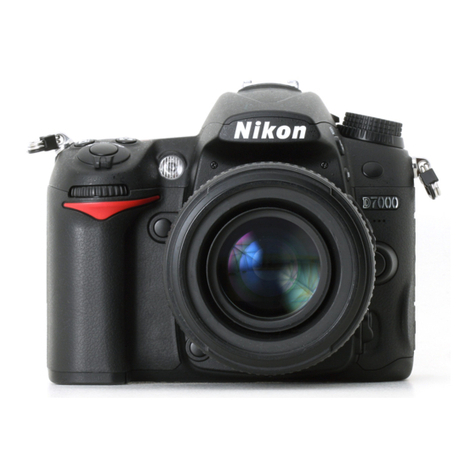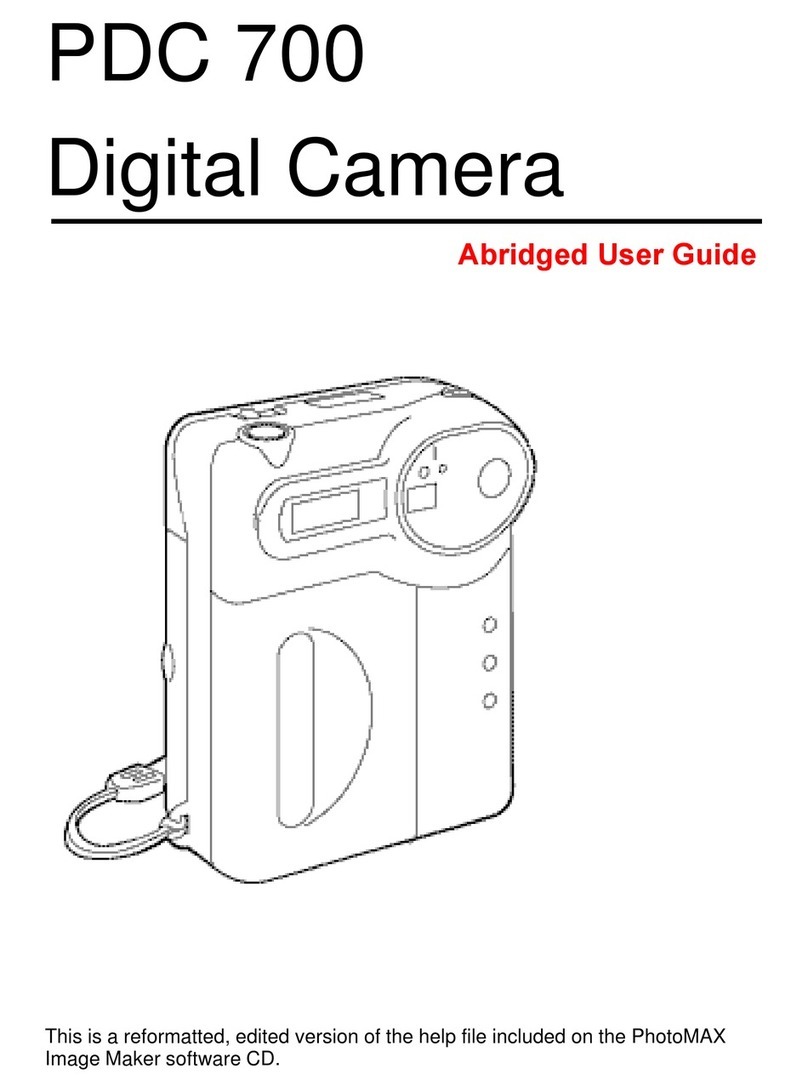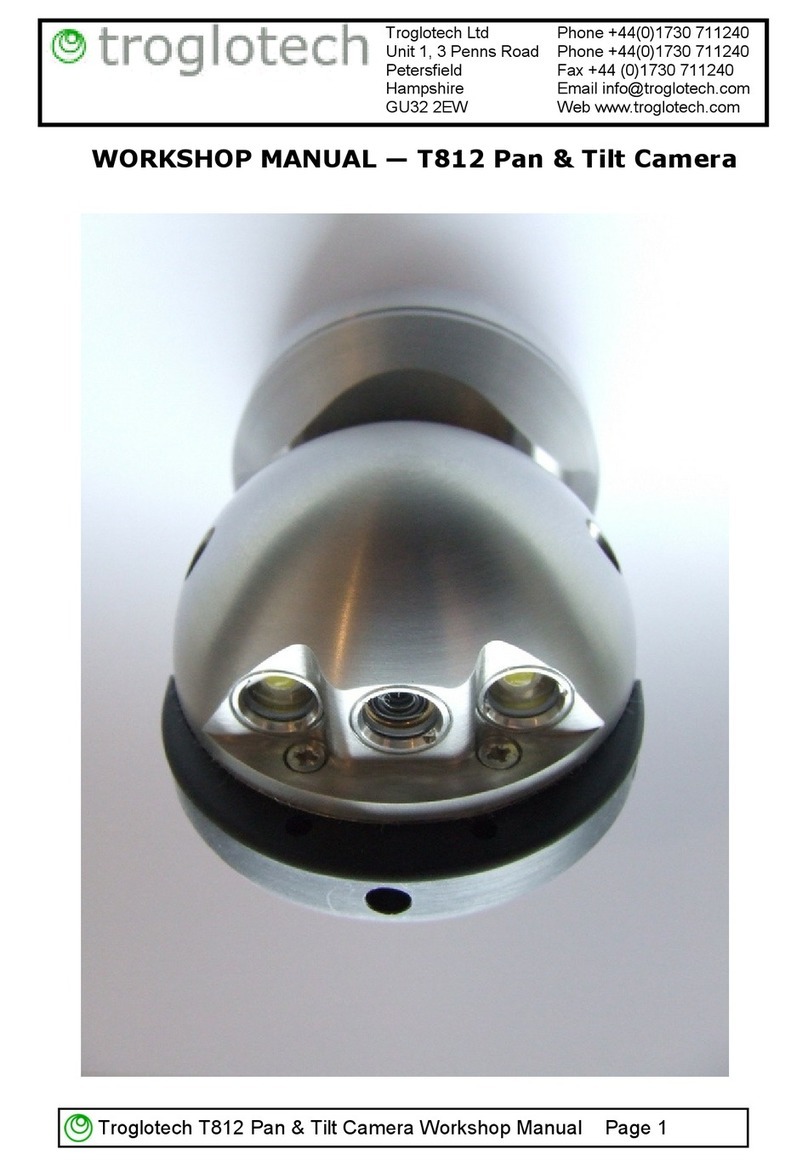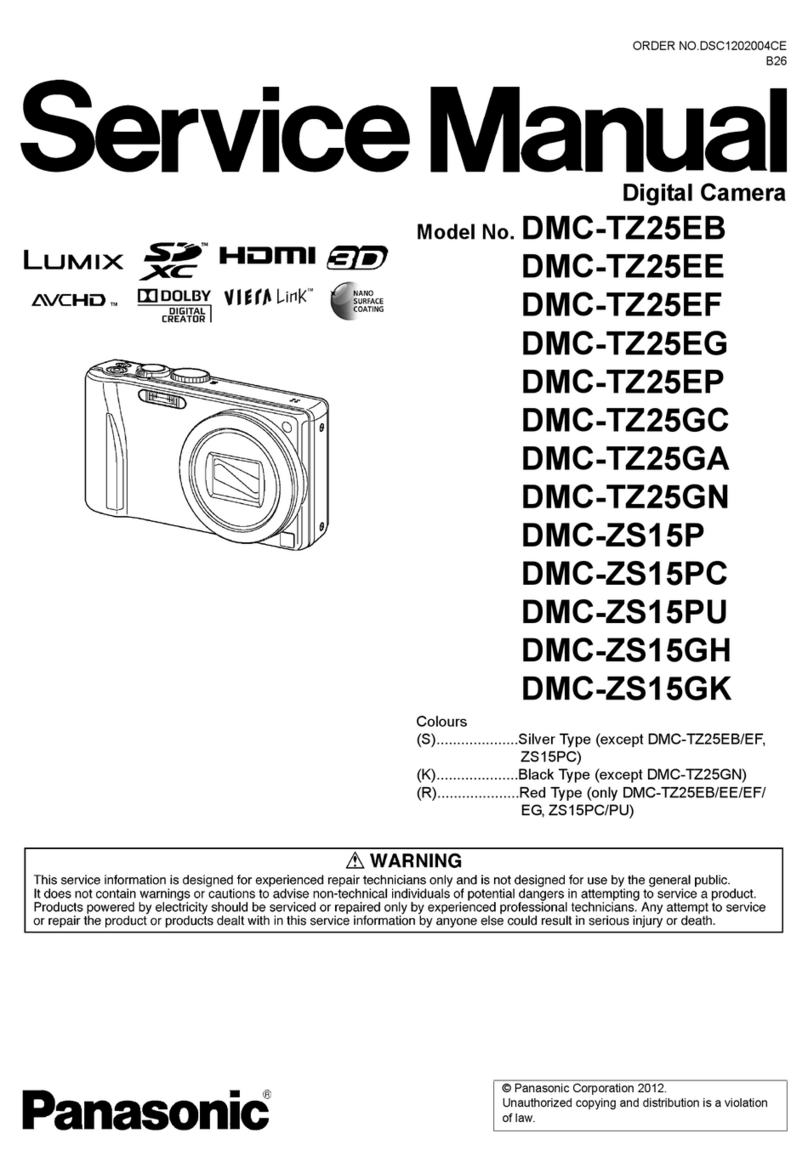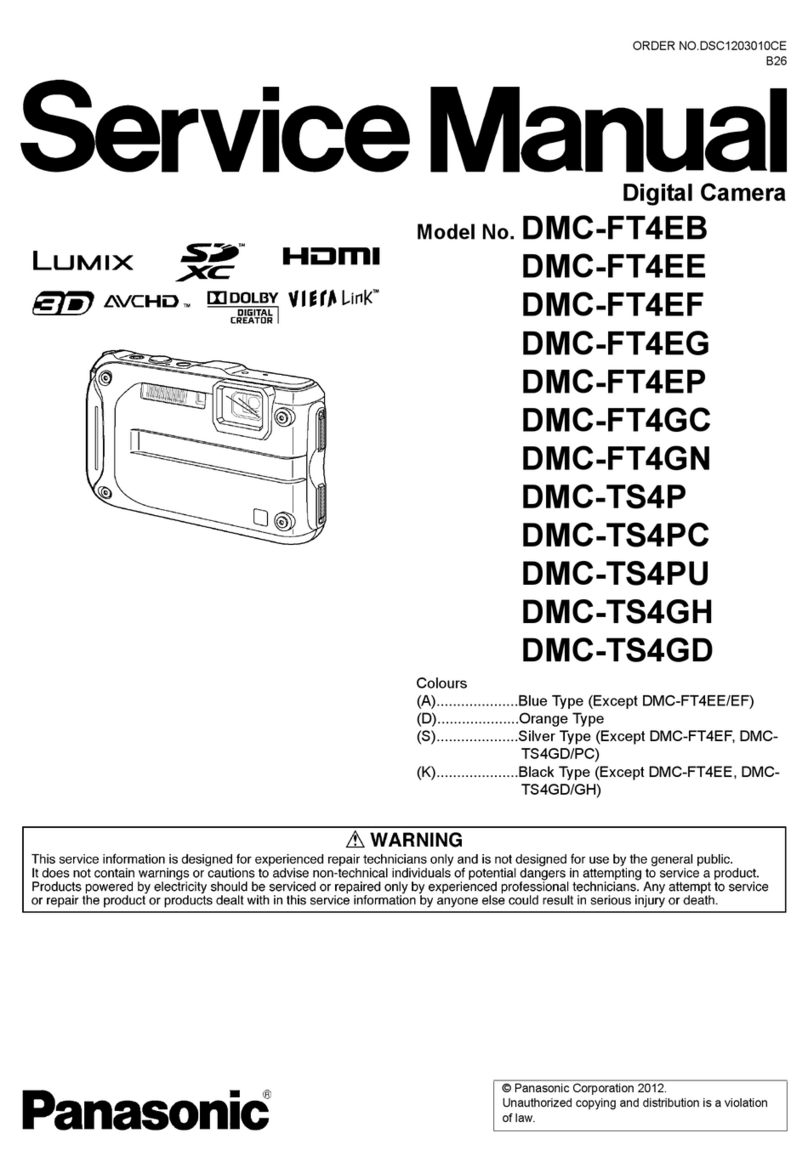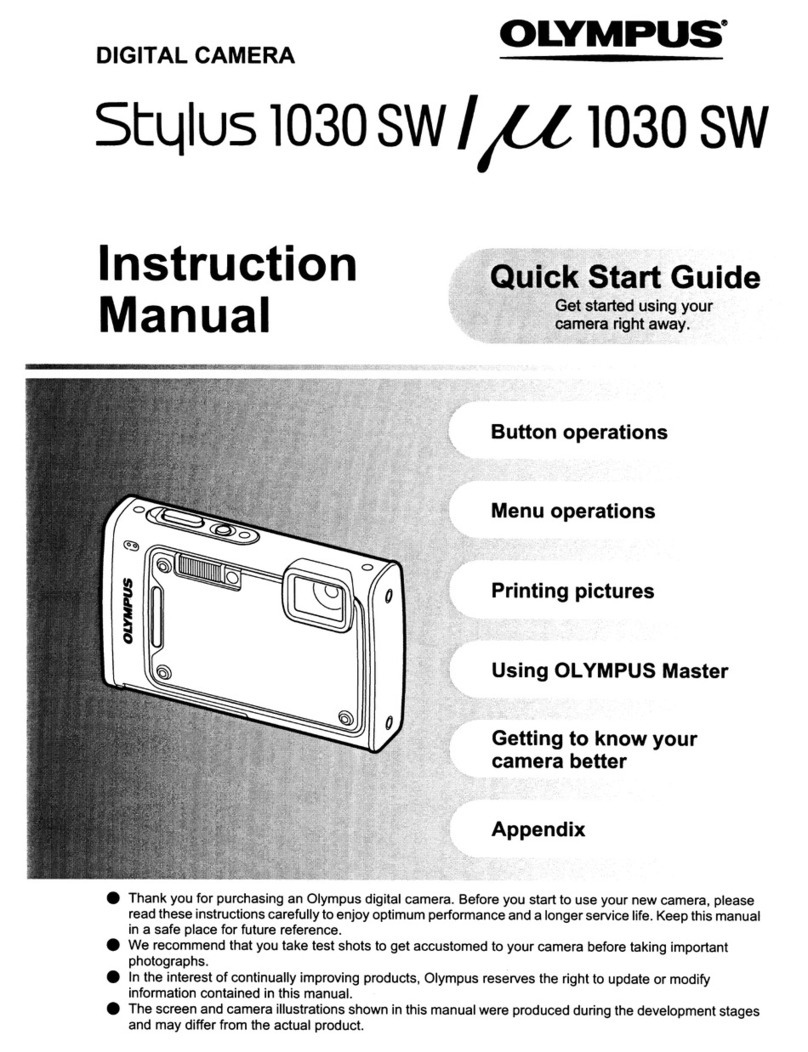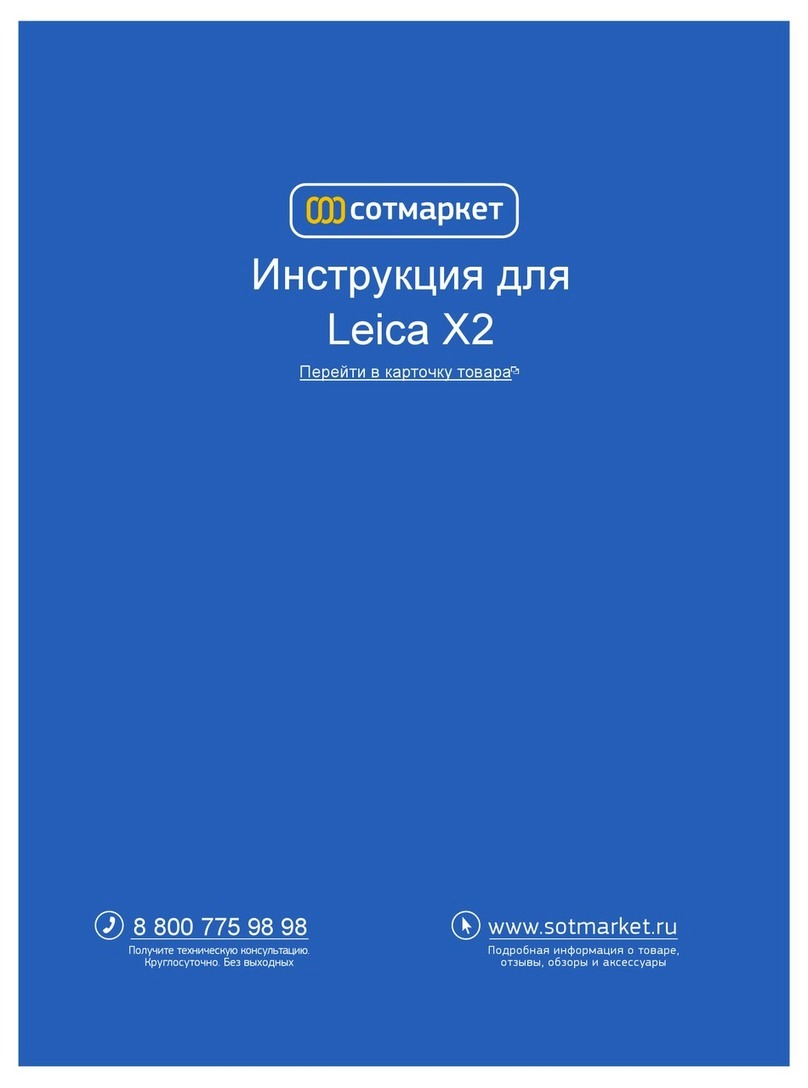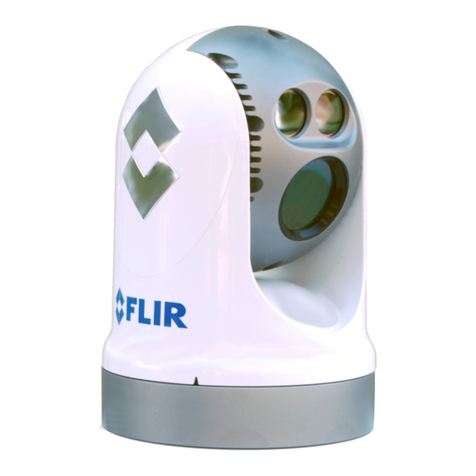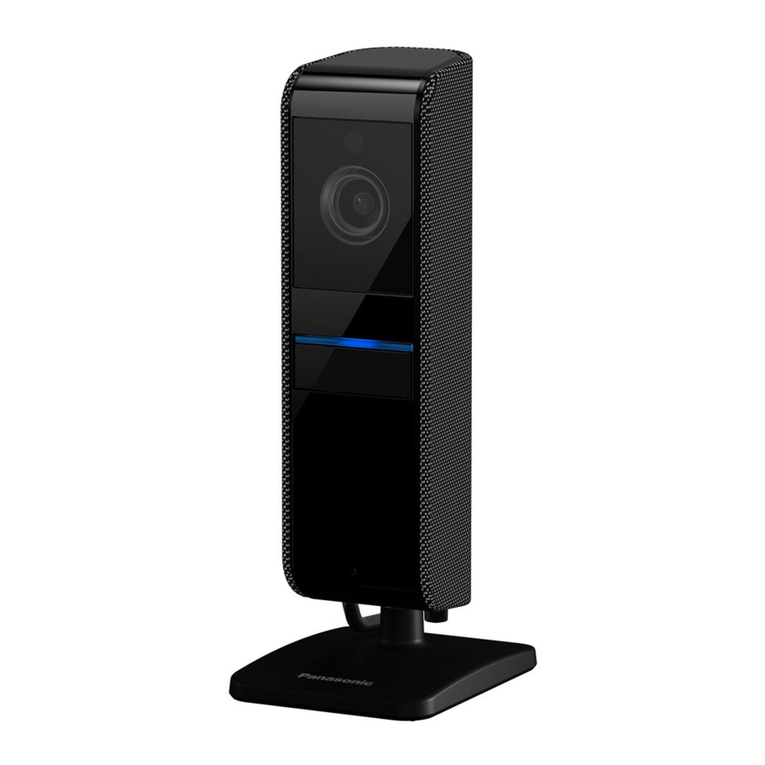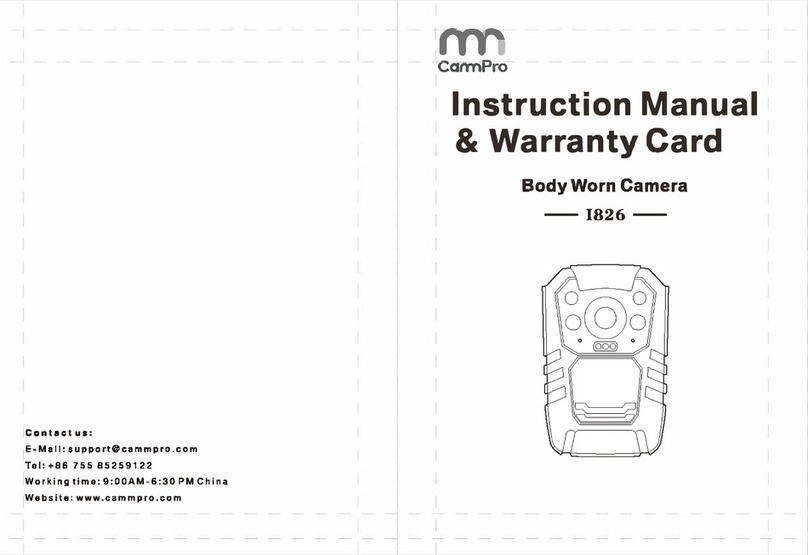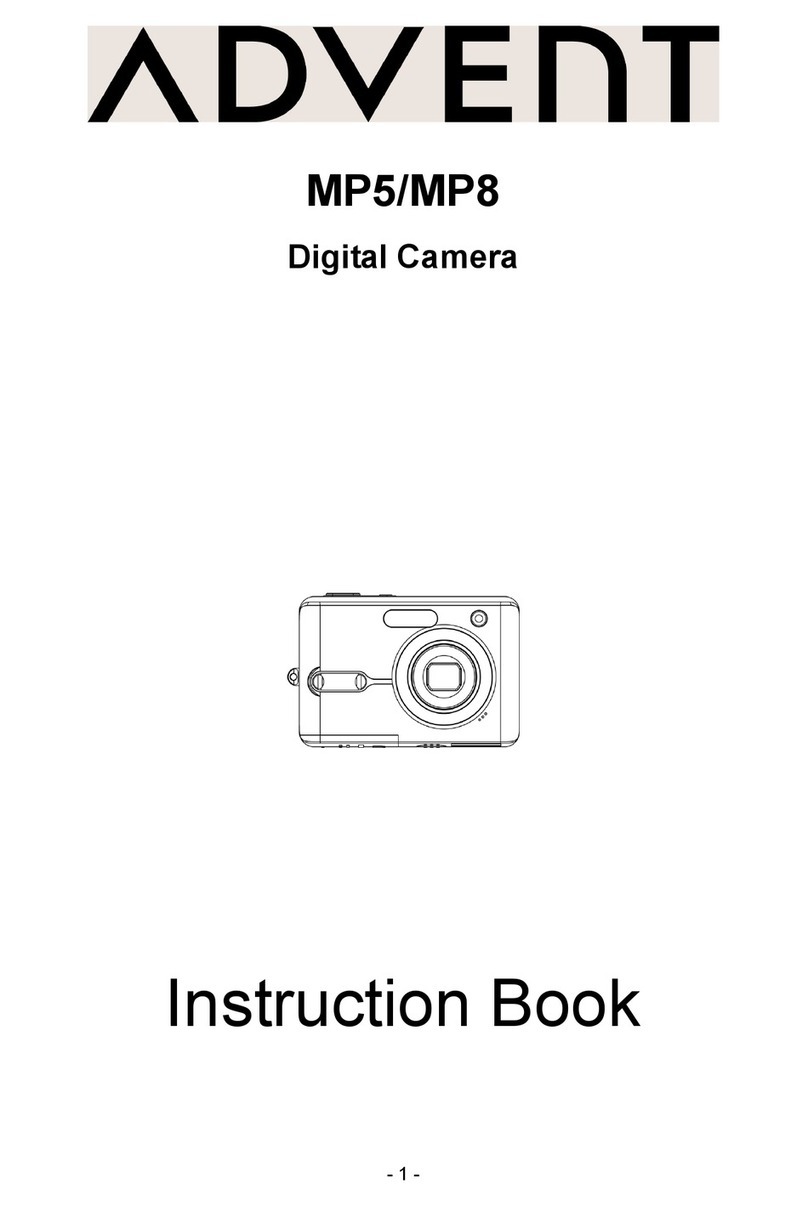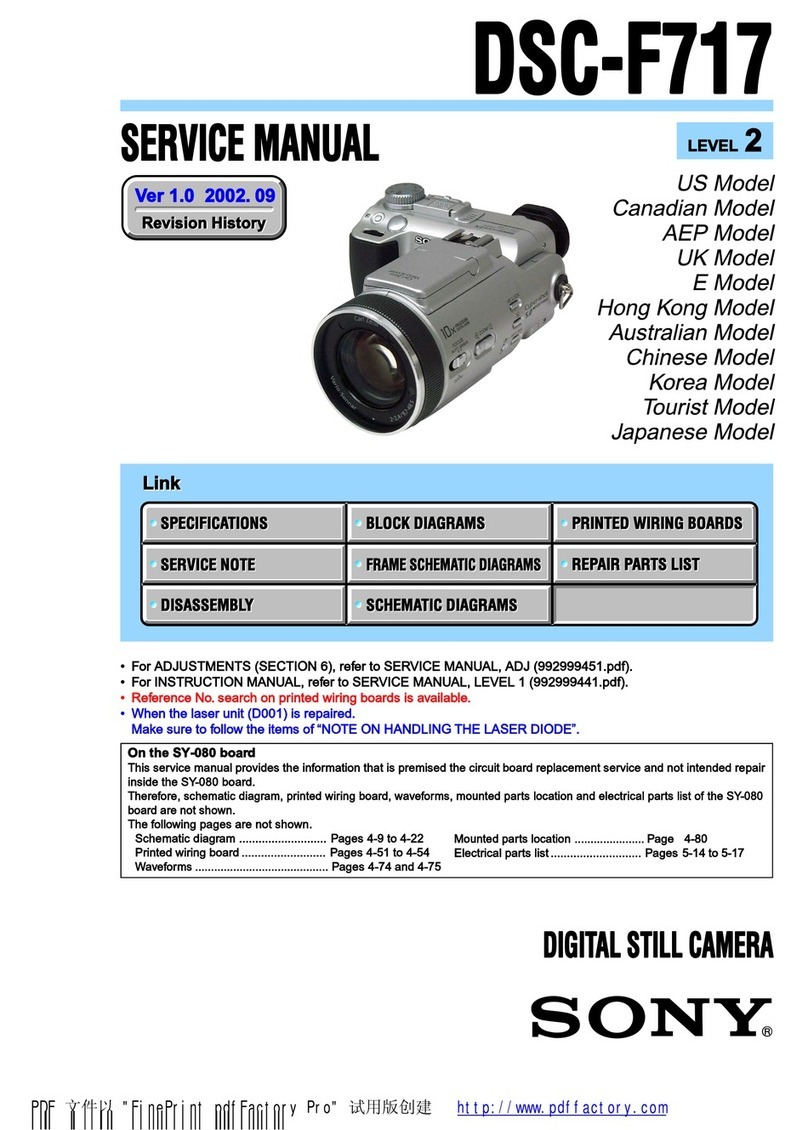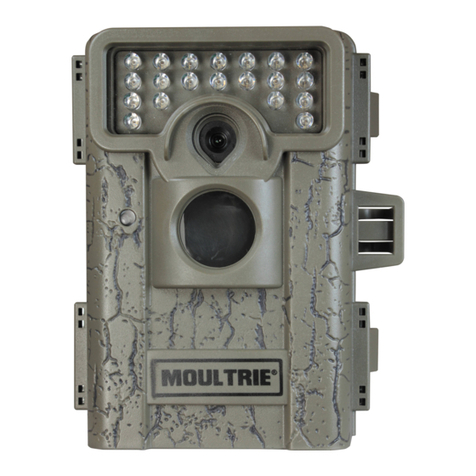Spectral Instruments 1100 Series User manual

Artisan Technology Group is your source for quality
new and certied-used/pre-owned equipment
• FAST SHIPPING AND
DELIVERY
• TENS OF THOUSANDS OF
IN-STOCK ITEMS
• EQUIPMENT DEMOS
• HUNDREDS OF
MANUFACTURERS
SUPPORTED
• LEASING/MONTHLY
RENTALS
• ITAR CERTIFIED
SECURE ASSET SOLUTIONS
SERVICE CENTER REPAIRS
Experienced engineers and technicians on staff
at our full-service, in-house repair center
WE BUY USED EQUIPMENT
Sell your excess, underutilized, and idle used equipment
We also offer credit for buy-backs and trade-ins
www.artisantg.com/WeBuyEquipment
REMOTE INSPECTION
Remotely inspect equipment before purchasing with
our interactive website at www.instraview.com
LOOKING FOR MORE INFORMATION?
Visit us on the web at www.artisantg.com for more
information on price quotations, drivers, technical
specications, manuals, and documentation
Contact us: (888) 88-SOURCE | sales@artisantg.com | www.artisantg.com
SM
View
Instra

1100 Series Camera System User's Manual
P/N 4501
Revision B 2005, 2006, 2007,2008, 2010
Spectral Instruments, Inc.
TUCSON, ARIZONA
Artisan Technology Group - Quality Instrumentation ... Guaranteed | (888) 88-SOURCE | www.artisantg.com

Spectral Instruments
* Notes
The AC- C power supply operates on incoming mains voltages from 100V to
240V AC at 50/60 Hz, with a maximum fluctuation of plus or minus 10%. The
equipment is intended to be used in an installation category II, pollution degree 2
environment.
* Warning
This equipment uses a laser to drive the fiber optic data communications port on
the controller. o not inspect the laser output while it is powered on. Use of
controls or adjustments of performance or procedures other than those specified
herein may result in hazardous radiation exposure.
Service Requirements
Remove AC power rom the unit be ore per orming any maintenance on the
equipment
Pt # 4501 2
Artisan Technology Group - Quality Instrumentation ... Guaranteed | (888) 88-SOURCE | www.artisantg.com

Spectral Instruments
TABLE OF CONTENTS
Table Of Contents
1 INTRODUCTION 7
1.1 1100 Series Camera System Overview 7
1.1.1 SICC - The Important istinction 7
1.1.2 CC s And How They Work 7
1.1.3 Multi-Port Readout And Sub-Arrays 9
1.1.4 Cooling The CC - Why/How - Implications Of Temperature 9
1.1.5 Sensitivity Of The Camera 10
1.2 The 1100 Series Camera Head 1 0
1.2.1 The CC Chamber 1 2
1.2.2 The Camera Head Module 1 3
1.2.3 Hooking Up Your Camera To Your Equipment 1 3
1.2.4 Shutters And Timing Considerations 1 3
1.2.5 Lenses, Light Paths and Vignetting 16
1.3 The 1100 Series Camera Power Supply Chassis 16
1.3.1 The Camera C Supply 16
1.3.2 Power Requirements 17
1.3.3 Thermo Electric Power Supply 17
1.4 The Cooling System 18
1.4.1 Refrigerated Cooling System escription 18
1.4.2 Thermo-electric Cooling System escription 18
1.4.3 The Cryo-Cooled Camera Service Cabinet 19
2. RECEIVING YOUR 1100 SERIES CA ERA SYSTE 2 1
2.1 Shipping Con iguration 2 1
2.1.1 Incoming Inspection Of Cartons 2 1
2.1.2 Opening The Cartons 2 1
2.2 Environmental Requirements For 1100 Series Cameras 2 1
2.2.1 Temperature - Humidity - Pressure 2 1
2.2.2 Electrical Requirements 2 1
2.2.3 Other Requirements 2 2
2.3 Assembly O The Camera System 2 2
2.3.1 Assembly Of The Camera Head 2 2
2.3.2 Assembly Of A Cryo-Cooling System 2 3
2.3.3 Assembly Of A TE Cooling System 26
2.3.4 Software Installation 26
2.3.5 P CI Fiber Optic igital Camera Interface 27
2.3.6 Software Operation 27
2.4 Startup 27
2.4.1 Power-On Condition And Indicators 27
2.4.2 Power-On Self Test 27
Pt # 4501 3
Artisan Technology Group - Quality Instrumentation ... Guaranteed | (888) 88-SOURCE | www.artisantg.com

Spectral Instruments
2.5 Commanding The Camera 28
2.6 Initial Tests 28
2.6.1 Types Of Images 29
2.6.2 efault Camera Readout Format 29
2.6.3 ark Image - Warm Camera 3 0
3. COOLING THE CA ERA 3 1
3.1 Image Quality 3 1
3.2 Per ormance Metrics 3 2
3.2.1 Noise 3 2
3.2.2 ark Signal Generation Rate 3 2
3.3 Other Metrics 3 3
3.4 O set Adjustment 3 3
4. USING THE CA ERA 35
4.1 Kinds O Images 35
4.1.1 Bias Images 35
4.1.2 ark Images 35
4.1.3 Light Images 36
4.2 Problems With Images - The Master Image Solution 37
4.2.1 Bias Images 37
4.2.2 ark Images 38
4.2.3 Light Images 39
4.3 Correcting Images 4 0
4.3.1 Why 4 0
4.3.2 How 4 0
4.3.3 Limitations On The Flat Field Process 4 1
4.3.4 Understanding The Scaling Effects 4 1
5. CA ERA SYSTE WARRANTY AND SERVICE 4 3
5.1 The Warranty Conditions 4 3
5.2 Returning A Camera For Service 4 3
5.3 Diagnosing A Camera Problem 4 3
5.3.1 Fuses 4 3
5.3.2 First Checks 4 4
5.4 Determining When To Re resh The Vacuum 4 4
5.4.1 Measuring The Camera Head Pressure 4 4
5.4.2 Why Pump 4 4
5.5 Re reshing The Camera Vacuum 45
5.5.1 Equipment Required 46
5.5.2 The Refresh Process 49
Pt # 4501 4
Artisan Technology Group - Quality Instrumentation ... Guaranteed | (888) 88-SOURCE | www.artisantg.com

Spectral Instruments
5.6 Cleaning The Window 5 0
5.6.1 Equipment Required 5 0
5.6.2 The Process 5 1
6. FIELD REPLACEABLE CO PONENTS 5 3
6.1 Camera And Power Supply Part Numbers 5 3
6.2 Cables And Lines 5 3
6.2.1 Camera ata And Power Cables 5 3
6.2.2 Cryo-cooler Refrigerant Lines 5 4
6.2.3 Power Supply Part Numbers 5 4
6.3 The PDCI Card 5 4
6.4 The Camera Head 5 4
6.5 The Cryo-cooler Compressor 5 4
7. SYSTE OPERATION AND SAFETY 50
7.1 Electrical Requirements 51
7.1.1 Incoming Power 55
7.1.2 Power Cords 55
7.1.3 Power Required 55
7.2 Physical Operating Conditions 55
7.2.1 Temperature 55
7.2.2 Humidity 55
7.2.3 Altitude 55
7.2.4 Vibration 55
7.2.5 Aggressive Vapors 56
7.3 Warnings 56
7.3.1 Cryo-cooling System 56
7.3.2 Electrical System 56
7.3.3 Camera Power Supply - Camera Head 56
7.3.4 Opening The System 56
7.3.5 Refreshing The Vacuum 57
7.3.6 The Camera Window 57
TROUBLESHOOTING 58
8.1 Image Issues 58
8.1.1 No Image 58
8.1.2 Streaks In The Image 59
8.1.3 Noisy Image 60
8.2 The Error Audio Alert 6 0
8.2.1 Camera Head Alarm 6 0
8.2.2 CC Too Cold 6 0
8.3 The Camera Seems Not To Be Stable 6 0
Pt # 4501 5
Artisan Technology Group - Quality Instrumentation ... Guaranteed | (888) 88-SOURCE | www.artisantg.com

Spectral Instruments
8.4 Camera Reports The Proper Temperature But Dark Is High 6 1
8.5 Camera Does Not Cool 6 2
8.6 Condensation On The Camera Window 6 2
APPENDIX A 6 3
CCD Readout Format 6 3
APPENDIX B 67
Multi-Port CCD Readout Parameters 67
Multi-Port CCD Image Pixel Data Format 67
Single-Port CCD Image Orientation 68
Over-Scan in Multi-Port CCD Readout 68
APPENDIX C 7 1
Sensitivity And Attenuation 7 1
APPENDIX D 7 3
Series 1100 Camera Command Set 7 3
APPENDIX E. 7 3
Series 1100 Acquisition Mode Description 7 3
APPENDIX F. 7 4
Series 1100 Bias O set 7 4
Pt # 4501 6
Artisan Technology Group - Quality Instrumentation ... Guaranteed | (888) 88-SOURCE | www.artisantg.com

1 Introduction
The 1100 Series Camera System is a multi-port (from one to four ports) 16-bit
camera that is available cooled to cryogenic temperatures (-70oC to –120oC) using a
re-circulating refrigerant cooler or Thermo-Electrically cooled (–30oC to –70oC). It
offers high precision, high stability and relatively fast 16-bit readout times from 4-
port CC s. Higher readout rates are available in 14-bit configurations of this camera.
1.1 1100 Series Camera System Overview
The Cryo-cooled 1100 Series camera system consists of two primary modules: the
camera head and the camera power/cooling cabinet. The camera head contains the
CC imaging sensor and all of its readout and control electronics. The cabinet
contains the power supply and the Cryo-cooler with its attendant return line
temperature management hardware. The Cryo-cooler is described in later sections
and comes with a separate manual as well.
Thermo-electric cooled versions of the 1100 Series camera consists of three primary
modules: the camera head, the power supply chassis and the liquid chiller. The
camera head contains the CC imaging sensor and all of its readout and control
electronics.
1.1.1 SICCD - The Important Distinction
Spectral Instruments manufactures precision digital imaging systems utilizing
scientific grade CC s. Innovative and detailed mechanical and electronic design
coupled with careful component specification and system manufacture result in
the ultimate in stable, high dynamic range digital imaging. Spectral Instruments
has invented the term Scientific Imaging CC , with SICC as the acronym,
which captures this high precision and high quality character of your camera.
This label occurs throughout our documentation as a shorthand reminder of those
high precision and high quality aspects of your camera system.
1.1.2 CCDs And How They Work
CC s are used in a large assortment of consumer electronic products. They are
available in a variety of sizes and types because of the popularity of this sensor
for low-cost digital imaging cameras. Most of these CC s are not scientific
grade. Moreover, they are operated so as to give you a “TV” image - that could,
but usually does not, end up as a low-precision numeric image in your computer
by using a computer card called a “frame grabber”.
CC cameras that produce high quality digital images are designed to produce
the precision digital image and not a TV image. They are cooled well below
ambient temperature to reduce dark signal and they are operated in “slow readout
mode” to minimize readout noise.
Artisan Technology Group - Quality Instrumentation ... Guaranteed | (888) 88-SOURCE | www.artisantg.com

Spectral Instruments
igital images are organized in a row/column format. Image elements (pixels)
emerge from a corner of the sensor. A sensor with more than one active corner
produces more than one stream of pixels during readout. Figure 1., below,
illustrates a single-port and a four-port CC .
Referencing the left-hand portion of Figure 1., the center-checkered region is the
imaging area. It is called the parallel register. To read out the CC , the grid of
pixels is moved, one row at a time to the left, along columns, into the serial
register, labeled SR. Once a row is moved into the serial register, it is then
moved, one pixel at a time to the output node, shown as a triangle and labeled A.
A column is a line of pixels consisting of one pixel from each row. The CC
does not read out columns, it reads out rows. But many characteristics of the
image that results are shared by all of the pixels at the same location in each row
(the same column) so they are analyzed as columns of information. efects
involving multiple pixels are almost always column defects.
The address of the first pixel out of a CC camera is row 0 column 0. Readout
occurs along rows, so the second pixel address is row 0 column 1. For a sensor
with 512 imaging pixels in a row and 512 rows, pixel 513 has the address row 1,
column 0. The last pixel out is row 511, column 511.
One Port CCD Four Port CCD
Figure 1.
It is possible to move more than one row into the serial register before the serial
register is moved into the output node. It is also possible to move more than one
pixel at a time from the serial register into the output node before it is digitized.
This multiple move process is called binning. The total number of pixels is
reduced in each direction by the amount of binning in that direction. The effective
size, on the parallel register, of each binned “super” pixel is enlarged. This
decreases the resolution of the image read by the binning factors (which may be
different for rows and columns).
Pt # 4501 8
Artisan Technology Group - Quality Instrumentation ... Guaranteed | (888) 88-SOURCE | www.artisantg.com

Spectral Instruments
Referencing now the right-hand side of Figure 1., since the CC illustrated
supports four-port readout there are two serial registers labeled SR1 and SR2.
Each serial register is divided into two halves, which is shown figuratively as a
black line in the parallel register. The parallel register can also be divided and
that is shows as a vertical black line. Neither black line exists in the CC nor in
the image that is read out four ports, the divisions are presented as black lines for
clarity in showing how the single sensor is effectively divided into quadrants for
four-port readout. The first pixel comes out A, B, C and at the same time.
They are combined into a single data stream with pixel data from A then pixel
data from B then C and finally . This pixel data stream has pixels from all of
the quadrants interleaved. Software sorts them out so they are presented properly.
The columns are still horizontal on the figure and rows are vertical in the image.
Spectral Instruments’ SI-Image software package displays the first pixel, the 0,0
pixel, at the lower left-hand side of your display. The pixels in each row are
displayed vertically. Row numbers increment from left to right in the display.
1.1.3 Multi-Port Readout And Sub-Arrays
It is possible to read only a portion of the entire image – a sub-region or sub-
array. For a one-port CC , setting the sub-array to read out is accomplished by
sending the camera a new set of readout and format parameters that include serial
and parallel offsets to the beginning of the sub-array and the serial and parallel
dimensions of the sub-array. The ensuing image readout will only include the
selected pixels. This ability to “home in” on a region of interest provides a quick
means of aligning or focusing a camera.
Multi-port CC cameras allow sub-array selection in the same fashion. The
difference is that a sub-array is provided for each active channel using the
submitted parameters as offsets from their respective readout corners. The
ensemble of sub-arrays are read out (and displayed in SI Image as a single image)
in the same time it would take for just one sub-array because the readout occurs
simultaneously for all active ports. So, it may require some imagination, but sub-
array readout, even in multiple port cameras, can be quite useful.
1.1.4 Cooling The CCD - Why/How - Implications O Temperature
SICC cameras are cooled to reduce the image contaminant called dark signal.
Images accrue this unwanted signal at a rate that decreases as the temperature of
the CC is lowered. Usually it is not the dark signal that is the problem (it could
be subtracted from the image), it is the noise associated with the dark signal. That
noise cannot be subtracted; it must be prevented.
A CC camera can be cooled too much. If the temperature of the CC is
lowered below about -120oC, the performance of the sensor starts to be adversely
affected.
Pt # 4501 9
Artisan Technology Group - Quality Instrumentation ... Guaranteed | (888) 88-SOURCE | www.artisantg.com

Spectral Instruments
Some versions of an 1100 Series camera system employ a refrigerated cooler that
is capable of lowering the temperature of the CC below -110oC. Spectral
Instruments determines the optimum operating temperature for the particular
CC you selected and sets that value as the operating temperature. There is no
reason to run warmer, as performance only degrades due to dark signal. There is
good reason not to run colder, as the CC may cease to operate properly. The
operating temperature of your camera is a factory selected parameter that can be
changed - but shouldn’t.
1.1.5 Sensitivity O The Camera
SICC cameras are designed to “see in the dark”. They do so quite well. You
can’t permanently hurt your camera by exposing it to too much light although, if
you have saturated any pixels in the CC , it will affect the camera’s ability to
make precise measurements of low light level scenes until after you have warmed
up the camera and then cooled it back down again.
ark images are a good way to find out how much light is leaking into your
equipment. An image obtained with no external light coming through the normal
path provides a view of how much light is coming from extra-normal paths. This
camera can see light leaks very well! To realize the full potential of your SICC
camera, it, and the equipment to which it is attached, must be light tight.
1.2 The 1100 Series Camera Head
The camera head back cover is shown in Figures 2A and 2B. It contains 3
indicator lights that are located near the FO connector. A green LE , labeled
POWER, indicates that C power is present; a red LE labeled ALARM, indicates that
an out-of-range or other error condition exists.
The third, red, LE , when illuminated, indicates that the fiber optic interface is
not properly terminated and that it is not operating. 1100 Series cameras are
available with several different options for a data port. AIA parallel copper wire
and CameraLink interfaces are currently available. When an alternative data port
is active (determined when the camera is built) the fiber optic port is not enabled.
When the alternative data port is active the third LE does not illuminate.
The round electrical connector on the camera head back cover is labeled POWER.
It connects to the power supply chassis via an 18-pin round connector. The
rectangular AIA connector is labeled DATA and is used to connect to an AIA
camera interface module. Alternatively, a fiber optic cable can be used to
connect a fiber optic camera interface module to the port labeled FO. The SHUTTER
connection leads to the shutter at the front of the camera. Not all cameras are
equipped with shutters. The TRIGGER port is used to synchronize operation of the
camera with external events.
The connector next to the camera power connector, called Vacuum Valve
Connecto , is used to connect the electrical power to operate the camera vacuum
Pt # 4501 10
Artisan Technology Group - Quality Instrumentation ... Guaranteed | (888) 88-SOURCE | www.artisantg.com

Spectral Instruments
valve. WARNING! It is important never to connect the C power supply to this
connector unless the vacuum port is properly connected to an appropriate, and
operating, vacuum system.
Figure 2A
1100 Series Cryo-cooled Camera Head Connectors
Figure 2B.
1100 Series TE Cooled Camera Head Connectors
Pt # 4501 11
Artisan Technology Group - Quality Instrumentation ... Guaranteed | (888) 88-SOURCE | www.artisantg.com

Spectral Instruments
1.2.1 The CCD Chamber
As mentioned in Section 1.1.3, the CC is cooled to reduce dark signal. The
CC is maintained inside a sealed evacuated chamber to insure that moisture
does not condense on the CC or its electronics.
In a lens-based camera, the chamber aperture seal is a fused-silica window. The
CC sensor is typically located 12.2 mm behind the front surface of the window.
The window thickness is between 3 and 4 mm depending upon its diameter.
Fiber-optic coupled CC cameras seal the CC chamber at the fiber optic.
Those models of an 1100 Series camera head cooled by a closed cycle cryogenic
refrigerator include a cold end capable of attaining temperatures as low as –190
oC. The cold end is permanently inside the vacuum chamber through an O-ring
seal so the camera body does not get cold – only the CC . A heater is used to
warm the CC to the operating temperature; typically between –70 oC and –110
oC. The cold head has two self-sealing quick-disconnects that allow the camera to
be easily unhooked from the compressor lines. A micro-heater around the
window prevents the window from frosting due to radiative cooling by the CC
that is immediately behind the window. A TE cooled camera also maintains the
CC inside an evacuated chamber that is very similar to the Cryo-cooled head.
The 1100 Series camera front is shown in Figure 3. In most configurations, two
different bolt circles are provided for mounting the camera head to your
application. One is a ¼-20 threaded screw hole set aligned with the rows and
columns of the CC . The other is a ¼” clearance hole set aligned at 45o to the
rows and columns of the CC .
Figure 3.
Front Plate
Pt # 4501 12
Artisan Technology Group - Quality Instrumentation ... Guaranteed | (888) 88-SOURCE | www.artisantg.com

Spectral Instruments
1.2.2 The Camera Head Module
Within the housing that surrounds the camera head vacuum chamber are the
electronics to run the CC . The camera requires C power in and provides
digital data out, in serial form via a fiber optic cable or in parallel over an AIA or
by a “Camera-Link” connection. The connector labels are shown on Figure 2.
WARNING: It is very important to turn off the power to the camera head before
connecting or disconnecting the camera power connector either at the camera
head or at the camera electronics unit!
The SICC camera is buffered against electrical transient events - radiated or
conducted - through the power line. This buffering suffices for coexistence of the
camera with typical laboratory conditions.
WARNING: It is an important requirement that the camera system incoming
power mains be filtered against exceedingly strong transients such as that
produced by lightning.
1.2.3 Hooking Up Your Camera To Your Equipment
A detailed description of the system setup and interconnect process is provided in
Section 2.3. It is important to understand the effect that very small voltage
differences among grounds to system components can have on images obtained
from your SICC camera. Various lines, bars, chevrons or wood-grain patterns
can occur in the background of low light images (they show up in the bias
especially well). These patterns are of no significance when imaging high light
level scenes but can disturb low light images and are exceedingly annoying as the
eye is very good at picking out such patterns even if the amplitude is not
statistically measurable.
Spectral Instruments has designed a camera that is essentially bias-pattern-free
when it is operated from a single power source as directed in Section 2.3. If that
camera is mechanically connected to some apparatus that is at a different ground
potential than that of the power source, small currents can flow through the
camera body. These small currents are always visible in the image; they are
always undesirable!
If the camera and the equipment cannot be grounded to the same point, it may be
necessary to introduce an electrical insulator (including screws) where the camera
physically is attached to your equipment.
1.2.4 Shutters And Timing Considerations
The camera provides millisecond resolution in timing exposures. That resolution
is useful when the camera is shuttered by equipment that responds in tens of
milliseconds.
The camera is also designed to obtain “images upon external signal”. This is
known as “triggered mode”. In this mode the camera is programmed to clear
Pt # 4501 13
Artisan Technology Group - Quality Instrumentation ... Guaranteed | (888) 88-SOURCE | www.artisantg.com

Spectral Instruments
charge continuously while the CC is staring into the application waiting for a
trigger event. The trigger event is provided by the application. The camera
ceases clearing immediately (within 5 milliseconds) upon receipt of the trigger
and stares into the application accumulating an image. At some later time the
camera is read out. In this “triggered” mode, the camera control electronics
operates in microsecond resolution appropriate to streak tube or pulse-triggered
imaging.
When a SICC camera is shuttered by a conventional multi- or twin-blade shutter
mechanism, there are several built-in delays that occur and must be considered
when obtaining short exposures.
A small twin-blade shutter requires at least 8 milliseconds to open and close. A
ten-millisecond exposure with such a shutter means that the integration time is
effectively 26 milliseconds for the center of the image and is 10 milliseconds for
the edge of the image. The resulting variation in effective exposure is very
noticeable. The exact pattern observed depends upon the type of shutter. In
every instance, you must not expect uniformly exposed images when the exposure
times are within a factor of 10 of the shutter delay times. Large shutters can take
more than 50 milliseconds to open and close.
While it is possible, in principle, to correct for shutter-caused patterns using a flat
field illumination, shutters are electro-mechanical devices that do not exhibit the
necessary stability over time so that shutter patterns be removed effectively by
flat fielding.
It is important to set the correct delay for allowing the shutter to close before the
image readout begins. Failure to make the shutter close delay long enough will
cause the image to smear as it starts moving on the CC while the shutter is not
closed. The shutter-close delay is parameter # 11 in the configuration table. It is
usually set at SI when the camera is tested.
The shutter is controlled through a current-drive circuit using the two-pin shutter
connection. This connection drives either a Vincent Associates or a Mellis Grillot
shutter with a 3-volt holding coil.
The shutter signal is available also as a TTL or opto-isolated logic signal on the
connector labeled Trigger.
Pt # 4501 14
Artisan Technology Group - Quality Instrumentation ... Guaranteed | (888) 88-SOURCE | www.artisantg.com

Spectral Instruments
8-Pin Trigger 2-Pin Shutter
Figure 4.
Figure 5.
Pt # 4501 15
Artisan Technology Group - Quality Instrumentation ... Guaranteed | (888) 88-SOURCE | www.artisantg.com

Spectral Instruments
The circuit for operating the TTL or Opto-isolated shutter is shown in Figure 5,
above.
1.2.5 Lenses, Light Paths and Vignetting
Spectral Instruments does not provide a lens. This is because most applications
that can utilize the precision of a SICC camera already provide an image plane
at which the SICC camera is positioned. A lens is useful for imaging with the
camera “straight out of the box” but is usually discarded immediately thereafter.
There is always some variation across the image of a “uniformly illuminated”
application. It is exceedingly difficult to obtain a uniform illumination field and
most equipment vignettes to some extent. There are methods to compensate for
this vignetting and they are discussed in detail in Section 4.
One type of application that is frequently troublesome for imaging artifacts is the
“long focal ratio”. When the camera is exposed to light that is nearly collimated,
that beam acts to expose very small dust specks on the window. The camera is
assembled with great care to eliminate any dust on the inside of the window. The
outside of the window is also cleaned and the camera is shipped with a protective
cover to keep the window clean. Life conspires to change that. ust particles
collect on the outside of the window. Those customers who have applications
involving highly collimated incoming beams will notice “little donuts”. These are
shadows of the dust particles on the outside of the window. They can be
corrected for by a process discussed in Section 4. but if your application does not
include image correction you will see the dust in a collimated beam illumination
of the camera.
Although cleaning the outside of the window is not recommended, Section 5.7
describes how to clean the window of your camera if such activity is really
necessary.
1.3 The 1100 Series Camera Power Supply Chassis
The power supply is housed in a 3.75” high 19” wide rack-mount chassis. A
power-on switch is located on the front panel. All cables enter from the rear of
the power supply. Figure 6. shows the rear of the power supply where the
connectors attach. The front panel has indicators for all of the C voltages. It
also has indicators for the incoming AC and for the status of a return line heater if
one is employed. A service manual is shipped with the power supply.
1.3.1 The Camera DC Supply
The power supply module converts incoming AC mains power into the C
voltages required by the camera.
Pt # 4501 16
Artisan Technology Group - Quality Instrumentation ... Guaranteed | (888) 88-SOURCE | www.artisantg.com

Spectral Instruments
The power supply provides an AC output that is used to connect a TE liquid
circulator or a refrigerated compressor. The AC output is turned on by software.
Indicators on the front panel show the power and status of the AC output.
The round 18-pin power connector, CAMERA POWER, connects to the camera head.
The pair of 4-pin connectors labeled HEATER and SENSORS receive the cables to a
refrigerated coolant supply line heater if such a return line temperature regime is
used.
Figure 6.
Camera Power Supply Module – Rear View
The alarm buzzer on the front side indicates any error condition. The front side
red LE also turns on when an alarm condition exists. The status lights on the
camera head blink three times when the camera is initialized, either after power-
on or by external software reset command. If a power supply voltage fails the
audio alert is turned on, as is the red “ERROR” LE . In addition, the failing
voltage indicator blinks.
1.3.2 Power Requirements
The power supply operates on incoming AC power in the frequency range from
48 to 62 Hz and can run on 100, 120, 230 or 240 volts. The supply auto-voltage
detects so there is nothing to change for different AC mains inputs in the 100 to
240 volt 50/60Hz range. The supply has a single 5A fuse at the rear that pertains
to the refrigeration line heater if a Cryo-cooler is used.
Manu of the connections to the power supply for a cryo-camera are made
internally to the supplied cabinet. Refer to the supplied manual for this cabinet
for further detail. If a TEC camera is purchased, the power supply connections,
shown in Figure 6, for the 5A fuse, Heater Power, Ref. Line Heater Sensor,
Pressure Sensor High and Pressure Sensor Low are not used and are plugged off.
Aux Power is used to run the TECs in the camera head.
1.3.3 Thermo Electric Power Supply
Essentially the same power supply is used with Thermo Electrically cooled
cameras. The top line of connectors and fuses is not present in the TE version.
Pt # 4501 17
Artisan Technology Group - Quality Instrumentation ... Guaranteed | (888) 88-SOURCE | www.artisantg.com

Spectral Instruments
1.4 The Cooling System
Two cooling systems are available for the two different camera-cooling
mechanisms. One is a Cryo-cooler for use with the –100oC cameras. The other is
a liquid re-circulating chiller for TE cooled cameras.
1.4.1 Re rigerated Cooling System Description
The Cryo-cooler is a single-compressor system that is capable of removing up to
4 watts at an operating temperature of –190oC. It is a cascaded Joules-Thomson
refrigeration system that uses special gas as the refrigerant. It includes pre-
charged gas lines in flexible metal-shields. The cables are connected, without
leaking, through special connectors. It requires two open-end wrenches (a 5/8” and
a ¾”) to make or break the connection at either the compressor or the camera
head. As mentioned in the manual for the Cryo-cooler, two wrenches must be
used so as to avoid applying torque to the connector within the compressor or the
camera head.
The 1100 Series cameras includes an A/C relay in the power supply that turns off
power to the Cryo-cooler if the temperature becomes too cold, if the SP ceases
running or if the camera power is turned off. An explicit host computer command
turns on cooling.
The refrigerated cooler must not turn off and then turn back on immediately. A
delay prevents turn-on from happening too quickly after a turn-off. For the 1100
Series cameras, camera cooling is only turned on when the high and low side
pressures are within 3 psi. An amber status light on the front panel of the power
supply blinks while the delay is counting down. When the amber light is on
steadily, the external AC outlet to a cooling unit is enabled.
The refrigerated coolant lines are flexible and designed to bend with a minimum
radius of ½ meter. These lines are, however; not designed to flex a lot at the
minimum ½-meter radius.
1.4.2 Thermo-electric Cooling System Description
The thermo-electric cooling system typically employs a glycol and water solution
that is pumped through the camera head back plate. To maintain the camera
cooling at a regulated temperature, the solution is chilled to a regulated
temperature at or near to local ambient. A pair of flexible hoses with quick-
disconnects attach to the camera head and to the re-circulator.
If the camera head back plate gets too hot, a relay in the power supply turns off
the A/C power to the TE cooler power supply. If/when the camera back plate
temperature drops below the cut-off (typically 55oC) the camera cooling can be
turned on again. A software command is required to resume cooling.
Pt # 4501 18
Artisan Technology Group - Quality Instrumentation ... Guaranteed | (888) 88-SOURCE | www.artisantg.com

Spectral Instruments
1.4.3 The Cryo-Cooled Camera Service Cabinet
Cryo-cooled cameras are configured with the camera C power supply and the
cooling compressor mounted in a wheeled cabinet. A manual is provided with the
service cabinet. In the instance of the refrigerant being flammable, the service
cabinet is shipped without the cooling line filter/drier installed but it is provided
in a separate box and must be installed per the accompanying manual.
Pt # 4501 19
Artisan Technology Group - Quality Instrumentation ... Guaranteed | (888) 88-SOURCE | www.artisantg.com
Table of contents

